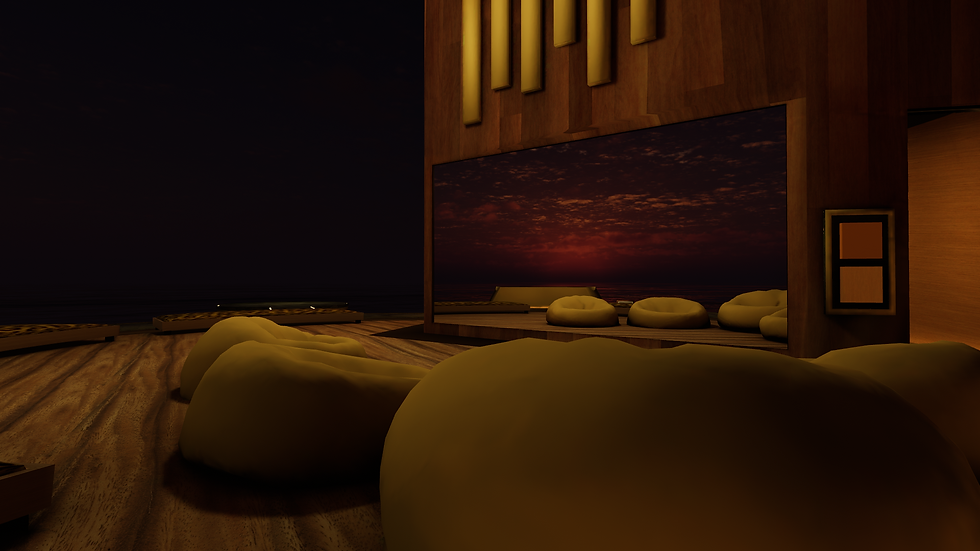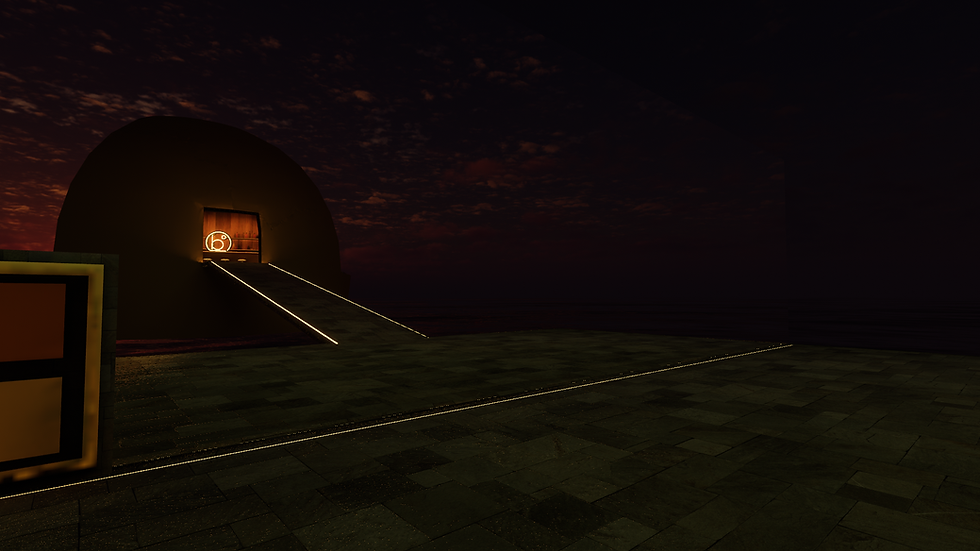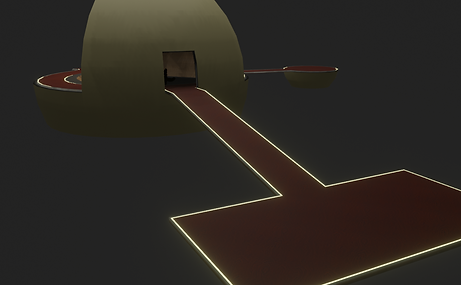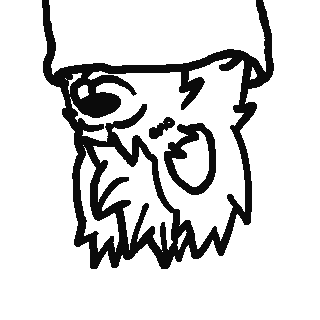online
opendome (2022) (vrc, cvr, neos)
This world was the culmination of a month of dedicated research, tracking and monitoring player positions and activity in popular social VR worlds across different applications highlighted that there were definitive patterns within social worlds that would lead players to build up in and utilize some areas more than others. My goals for the world after condensing my research were as follows.
-
Ensure that the space is performance oriented, readable and accessible, spacious, novel and comfortable.
-
Design separate simple locations in the map that allow for a dynamic range of social interactions.
-
Design the world around a unique spherical form while maintaining the lowest possible poly count.
-
Build the project to as many platforms as possible.
There is a full list of considerations below, this was just a condensed list of core principals for this specific project. Optimizing this world and working with the form I chose required some interesting topology solutions for lightmapping, and keeping the poly count low was a fun challenge. All together the entire project was around 20k tris.
.png)



Main area teleport / Separated initial spawn location-
Players can start loading and downloading other avatars away from large groups.




Various gathering locations -
-
All four of these gathering locations allow for wildly different settings for social interactions and have varied proximities to one another.
-
All of them are immediately visible from the spawn island, making it easy for new players to navigate between areas and find other players.
-
Each area has a mirror with a low cost and aesthetic view,
-
Each had considerations for different avatar sizes and offered different levels of brightness and lighting.
Findings / design
considerations
In no particular order, here are some of the design considerations I have found to be helpful when creating social multiplayer environments . All of these were considered while working on this project.
-
Performance / Cross Platform Support / Download size / Engine.
This refers to the average framerate in the world for the average VR user, how long it takes to download the world and whether or not it is available for android builds of the application and the social VR application that the environment is published to. The impact of these factors cannot be understated.
-
Audio falloff
Player volume and auditory separation between spaces.
Most popular worlds will have a small amount of audio overlap between certain gathering areas. Some worlds will have two or three separated groups of these different overlapping areas so that completely different dynamics can be established between areas. It is important to consider this when creating social spaces, as there is a fine line between a space feeling populated and a space feeling cramped.
-
Rendered Geometry
Amount of geometry being rendered in front OR behind player, particularly at gathering areas..
This is important as many people will use personal or world mirrors as gathering locations, which means the geometry behind them is no longer culled, and the "view" from these locations should be considered.
-
Visibility / Accessibility
How easy it is to see and navigate to areas of the map.
Some worlds rely on players learning the layout of the map, while others allow players to easily locate other groups of people upon spawning. There is definitely an argument to be made for making secret or hidden areas that encourage some level of exploration, however.
_PNG.png)
_PNG.png)
_PNG.png)
-
Visuals (Lighting, Aesthetics & Context)
The type of lighting utilized in the world (baked, real-time, mixed, etc) and the brightness of different areas. This can often be challenging as most social VR platforms allow for custom shaders to be uploaded on avatars, and they can interact with environmental lighting in a variety of ways.
There are clear trends amongst the aesthetics of popular worlds, with many set at night in realistic interior spaces located within urban areas, many others are set in minimalist abstract open spaces. This just seems to be the status quo, presumably because these spaces are easy to design and optimize for creators. But they are also familiar, not bright or visually straining, and easy to navigate for players.
It's also important to consider the context surrounding the environment you are creating. Bars and club worlds are often focused on providing group social interaction in a very casual context. Language learning worlds still serve as social hubs, but are focused around allowing smaller groups of players to have more intimate conversations in a somewhat formal context in order to teach and learn various languages.
-
Proximity
The density of players and player groups within the context of the whole world.
If a world hits its max player count, it's important to consider how they might be distributed, some worlds will exclusively have several larger areas for socializing, which in turn removes the ability for smaller intimate groups to form and encourages larger groups to form. Finding a balance and placing barriers between groups to take advantage of frustum culling is generally advised.
.png)
Thanks for reading! Hopefully you found some of this useful and / or insightful.
Ultimately I stopped maintaining this world due to other projects taking priority, but it was still an incredibly fun exercise in building a functional social environment and figuring out what that even means. I've applied a lot of these principals in my work since and figured they might be worth sharing for those interested.
